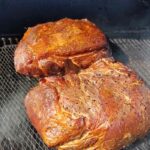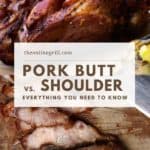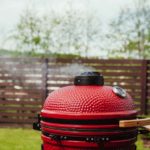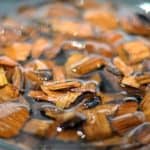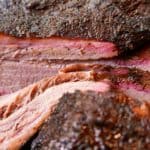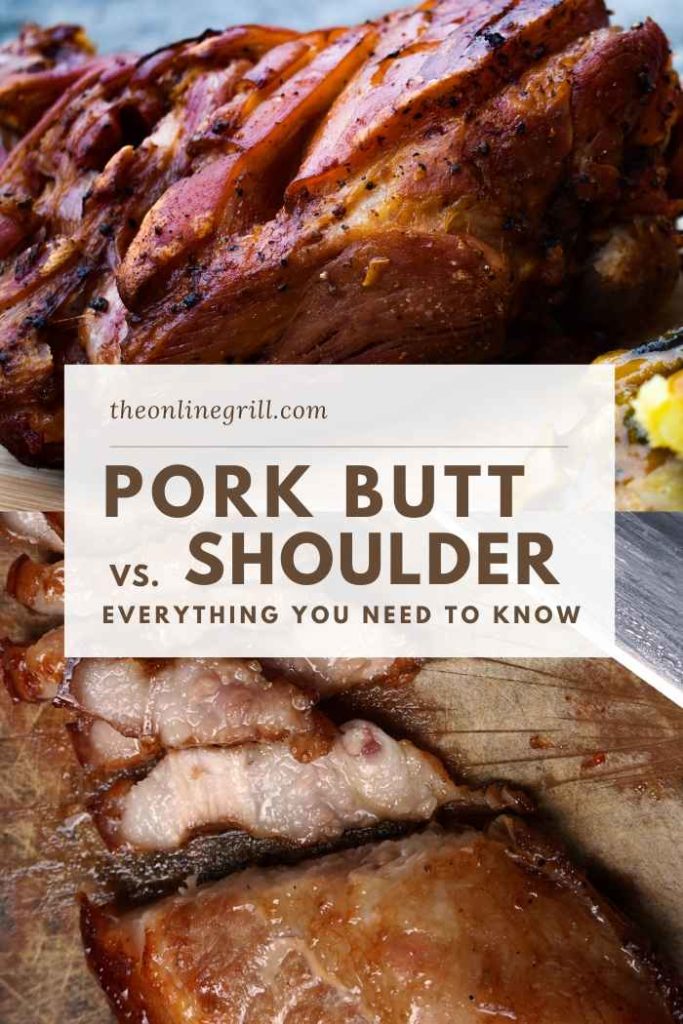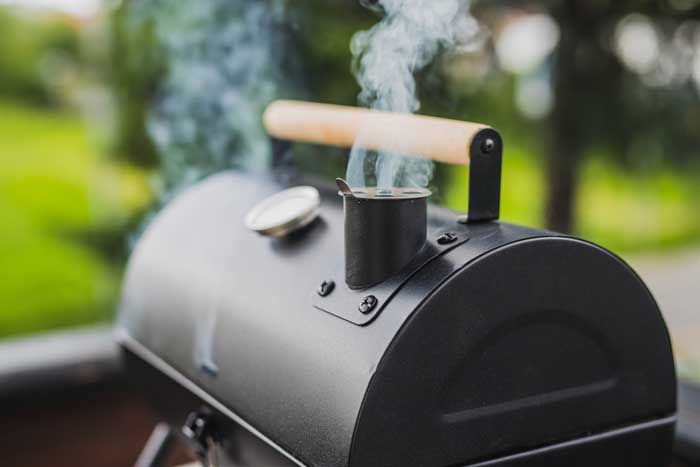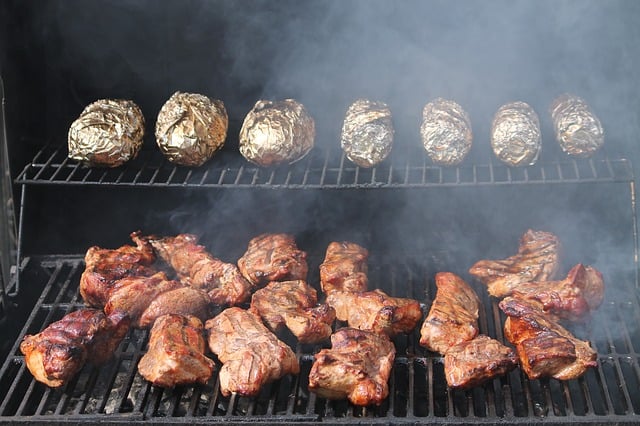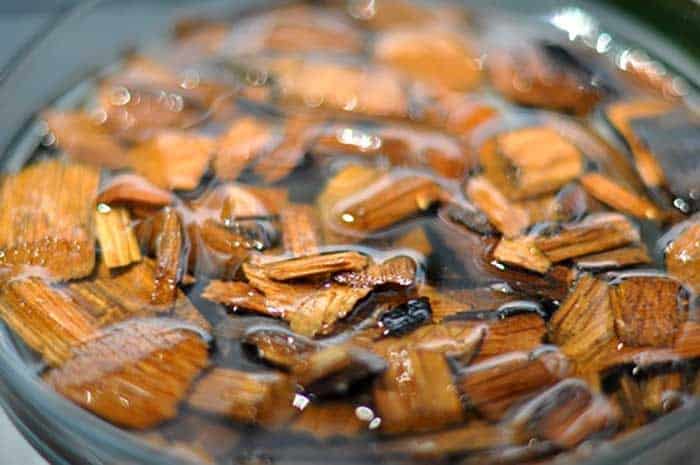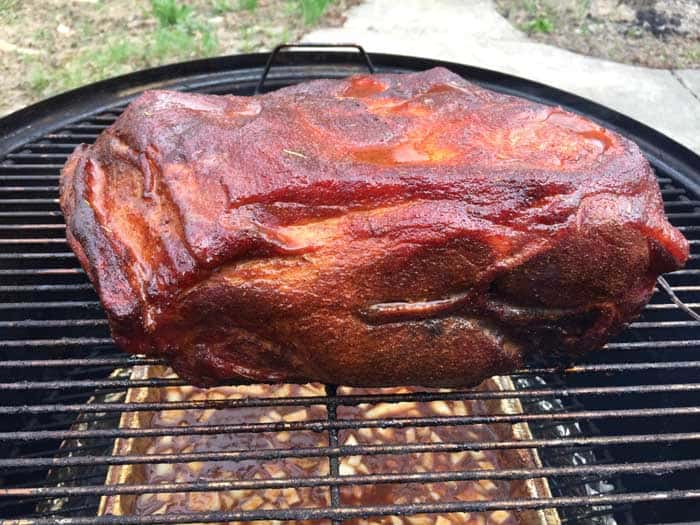Master the art of smoking pork butt or shoulder with our comprehensive guide. Understand the science behind whether you should smoke pork butt fat-side up or down, with expert tips for the juiciest, most flavorful results.
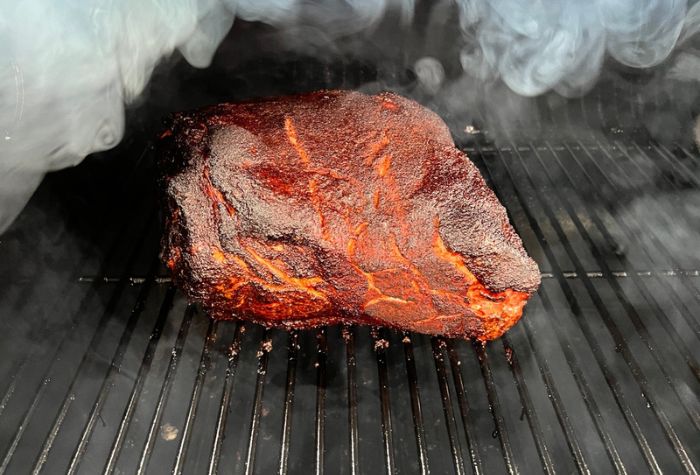
The world of barbecue is full of lively debates. One centers around an ever-present question: should you make your smoked pork butt fat side up or down?
There are plenty of opinions, but the answer is clear when you look at the science. For maximum flavor and tenderness, you should smoke your pork butt fat-side down (with the fat closest to the heat source).
Want to know why? Let’s take a look.
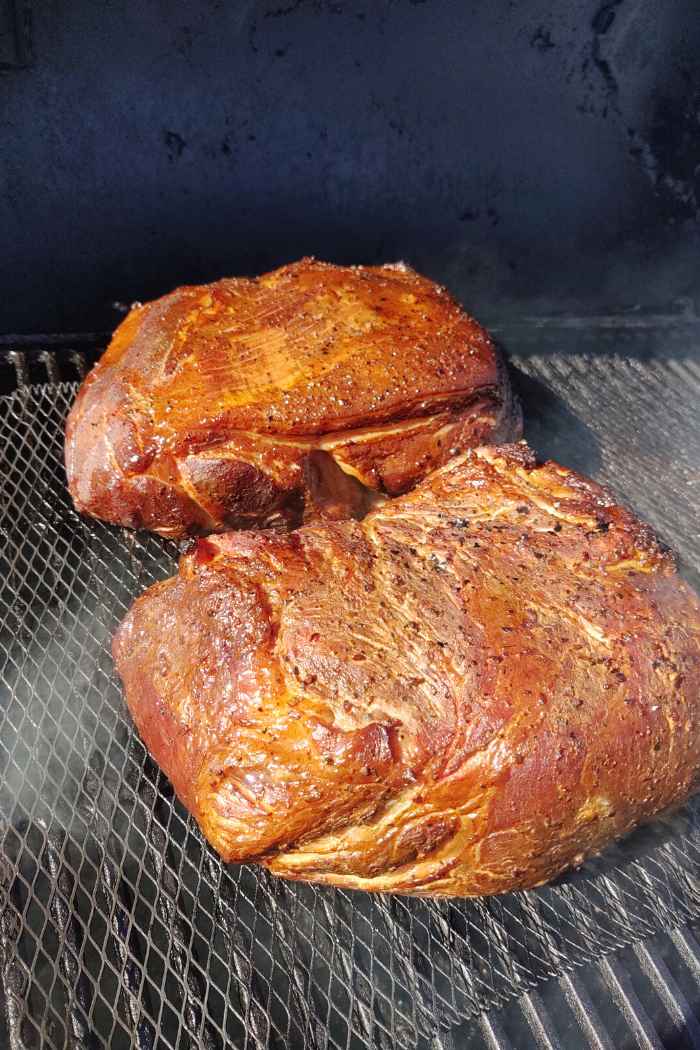
What’s a Fat Cap?
A good pork butt (or shoulder) often has two noticeably different sides. One is bare meat. The other is a thick, white layer of fat, sometimes called a fat cap.
What you should do with the fat cap is a matter of opinion. Some people trim the whole thing off. Others trim it down to a thickness of about ¼ inch. And still, others leave it as-is. Fat can enhance the flavor and texture when you’re smoking meat, so it’s a good idea to keep some of the fat cap at least. Whichever way you smoke your pork butt, fat is an important part of the flavor!
The Science of Smoking Fat-Side Down
Smoking a pork butt with the fat side facing the heat source has plenty of advantages. In most smokers, this means having the fat side down.
When you have a thick layer of fat between the meat itself and your heat source, it works like insulation. Because the meat is protected from direct heat, it won’t dry out or burn.
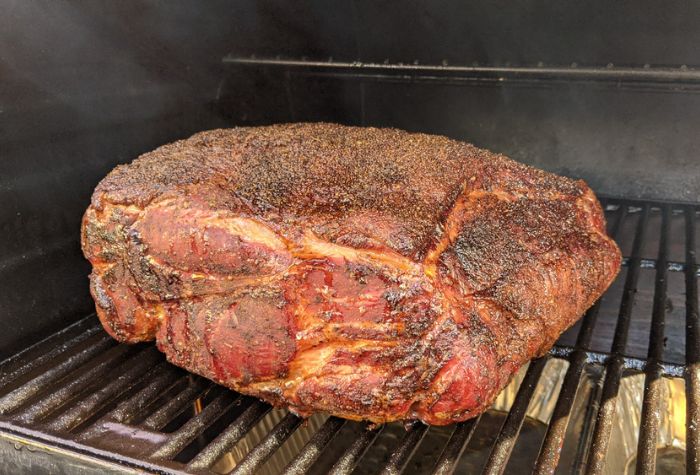
Smoking fat-side down also has another advantage: you get the full benefit of your dry rub or other seasonings. You don’t have to worry about melted fat running down the sides of the meat, taking trails of seasoning with it.
That being said, smoking with the fat side down has its disadvantages, too. Fat burns, and as it drips down, it may ignite and cause charring. It also may spike the temperature in the smoker. If you want to end up with a great-tasting piece of meat, cooking at the right temperature for the right amount of time is key, so make sure you monitor the temperature closely.
The Science of Smoking Fat-Side Up
Talk to enough barbecue enthusiasts, and you’ll find someone who passionately argues that every pork butt should be cooked with the fat side up. If you ask them why, they’ll say the fat melts into the meat, making it juicy and flavorful.
It would be great if this were true. However, this argument misses a very important fact — fat melts away but it can’t penetrate the meat.
Why? Fat is oily. Meat is mostly water. And even if you paid no attention whatsoever in science class growing up, you might know that oil and water don’t mix. No matter how much the fat cap melts, it can’t penetrate the meat and make it juicier.
However, it can make the surface a little more tender. As the pork butt heats up, the fat starts to melt and run down the sides, coating the cut in oil. That prevents the surface from drying out and may make it more tender.
It might sound nice in theory, but this process has a significant downside: it actually makes the meat less flavorful. Before you put the pork butt in the smoker, you probably coated it with a dry rub or a marinade.
When the melting fat drips down the sides, it washes that seasoning away. So when you smoke with the fat side up, larger fat caps make for less flavorful finished products.
It’s also important to note that proponents of fat-side-up smoking are missing a major point: You don’t even need a fat cap to make the meat juicy. Pork butt has a massive amount of intramuscular, or marbled, fat. That fat melts as the meat cooks, making it incredibly juicy from the center to the surface.
Flipping in the Middle: The Best of Both Worlds?
Each cooking method has advantages and disadvantages, so you might think the best way to smoke a pork butt is to strike a compromise and flip it halfway through. That way, you get the benefits of smoking fat-side up and fat-side down. Right?
Unfortunately, flipping the meat can complicate the smoking process and give you a pork butt that simply doesn’t live up to your expectations. Flipping it can cause the meat to lose some moisture, but the main issue comes from opening and closing the smoker, especially if you do it repeatedly.
Each time you open the smoker, heat escapes. It then takes some time for the meat to heat back up once you’ve closed it again. The uneven heating causes the temperature of the meat to fluctuate and makes it harder to know when it’s done.
Opening and closing the smoker can also make you lose flavor. The whole point of the smoker is to let the smoke slowly sink into the meat, and every time you open it, you lose some of the smoke.
Some people do choose this method, but it’s a lot less common than smoking with the fat side up or the fat side down. Pitmasters tend to be opinionated people, and most just choose one way or the other!
Choosing the Right Method for Your Smoker
Our recommendation is to smoke your pork butt with the fat closest to the heat source. But depending on the kind of smoker you have, the heat source might not be in the same place.
In vertical smokers, heat comes from below. If you have one of these, you’ll want to cook with the fat side down. However, in an offset smoker, the heat comes from the side. So, in this case, cooking with the fat side up is the better choice.
Should You Trim the Fat Cap?
Just as many people disagree on whether you should make smoked pork butt fat side up or down, many also have equally strong beliefs when it comes to the fat cap. Trimming or not trimming is a personal decision, and there’s solid reasoning behind each choice.
Leaving It As-Is
If you want to give the pork butt the best possible protection from drying out, you might choose to leave the fat cap on. Some of the fat will melt during the smoking process, and you can trim off the rest once the meat has been fully cooked. Leaving the fat cap on also gives you an unexpected sensory bonus — it smells delicious as it melts!
However, keep in mind that fat caps can be pretty thick — sometimes about an inch. You don’t need that much insulation from your heat source, so most people at least trim it a bit before cooking. But if you choose to leave it on, it won’t do any harm.
Removing It Entirely
Some people prefer to just remove the fat cap entirely. If you do this, make sure you aren’t accidentally cutting away the meat below it. Getting rid of the fat cap might be the right choice if you want to create as much bark as you possibly can.
It’s also an option if you want your finished product to be as well-seasoned as possible. Fat can be flavorful, but the hard, subcutaneous fat that makes up the cap can’t be penetrated by dry rubs, marinades, or other seasonings. It also can’t be penetrated by smoke. That means that when you do trim away the fat cap to eat the meat, the area right underneath might not be as flavorful as the rest.
It may seem like removing the fat cap would make the meat dry out. After all, you wouldn’t trim the fat off a brisket flat! But keep in mind that brisket is a comparatively lean cut of meat, and it really benefits from a fat “shield.” Pork butt has a lot of marbled fat. Even without a fat cap, the melting intramuscular fat effectively bastes the meat from the inside out!
Trimming It Down
Many people choose to go this route. You get the benefit of a little insulation, but you also don’t have to contend with a massive slab of fat after cooking. It’s a lot easier to trim the fat before cooking than it is to trim it after. In general, if you choose to trim the fat cap, you’ll want to cut it down to about ¼-inch thick. It’s a good idea to experiment with different thicknesses and see which one you like best.
Finding Your Own Barbecue Rules
There are no laws when it comes to barbecue. And if you experiment with different smoking methods, you might find that the answer to pork butt fat side up or down is less clear than it appears to be.
Just as you’ve probably experimented with different woods and types of smokers, you also can experiment with orienting your meat in the smoker. It will be an enlightening — and delicious — adventure.
